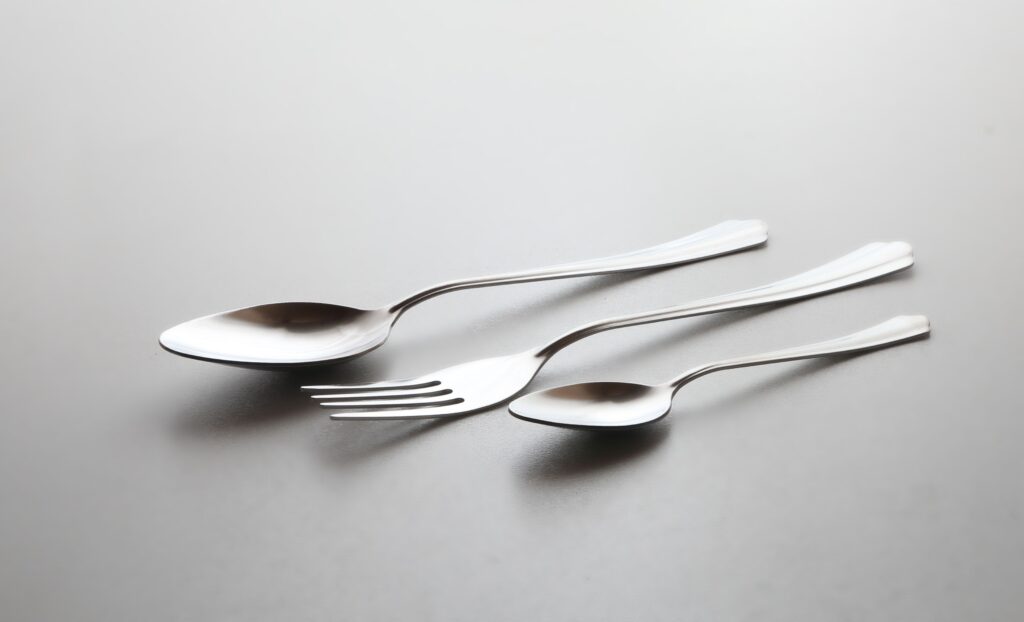Teaching an autistic child to use cutlery can be a challenging but rewarding task.
In the below article we dive into what can make this difficult and give you some strategies to try.
Autism and using cutlery
The first step to tackling this problem is to look at why your child doesn’t like using knives and forks.
Sensory factors
Autistic children often experience heightened sensory sensitivities, making them more aware of certain sensations that might be overwhelming or uncomfortable.
The textures, sounds, and even visual aspects of knives and forks can trigger sensory overload for some children with autism.
The clinking of metal against plates, the feeling of the utensils in their hands, or the taste of metal on their lips may lead to a strong aversion.

Motor skills
Fine motor skills involve the coordination of small muscle movements, which are necessary for using utensils effectively.
Many autistic children face challenges with fine motor skills, such as holding utensils properly, scooping food, and bringing food to their mouths.
Disinterest in food
Some autistic children may have a restricted range of food preferences, leading to a disinterest in using utensils during mealtimes.
They might prefer finger foods or specific textures, making the idea of using knives and forks seem unnecessary or undesirable to them.
Break to routine
It is well known that autistic children often have a strong preference for routine.
If they have always been spoon fed or used their fingers to eat then they may think, why change?
Cutlery tactics to try
Whilst the common caveat applies in that every child has different needs and capabilities. We have pulled together a selection of tips to try.
Here are a few strategies to consider:
Start with a fork
For many children, the fork is easier to use than the knife.
Begin by showing the child how to hold the fork and use it to spear and scoop food.
You can also model the behaviour by using a fork yourself and encouraging the child to imitate you.
Gradually introduce a knife
Once your child is comfortable using a fork, you can introduce the knife. You can start by showing the child how to hold the knife and use it to cut soft foods, such as cooked vegetables or eggs.
Use visual aids
Visual supports, such as pictures or videos, can be helpful for teaching new skills to children with autism.
You can create a visual schedule or sequence of steps that shows the child how to use the knife and fork.
Visual supports are available in many guises on Amazon, here are some we recommend.
Use rewards
Positive reinforcement, such as praising the child or offering a small reward, can be an effective way to motivate the child to learn and practice new skills.
Try sensory friendly cutlery
It may be that shiny metal cutlery feels uncomfortable for your child. With that in mind you may be well served to experiment with different materials and types.
These bendy knives and forks on Amazon may be more appealing to their sensory needs.
Be patient
Remember, Rome wasn’t built in a day.
Learning new skills can be challenging, and it may take time and practice for the child to become proficient with the knife and fork.
It is important to be patient and consistent in your teaching, and to provide the child with plenty of opportunities to practice and build their skills.
Summary – How to teach an autistic child to use cutlery
Firstly parents should understand that their child is not being difficult. Their resistance to cutlery is likely due to difficulties associated with their condition.
Sensory sensitivities and a fondness of routine are both likely blockers to the change.
It is always a good idea to consult with a medical or mental health professional if you have concerns about your child’s development or if you need additional support in teaching new skills.

